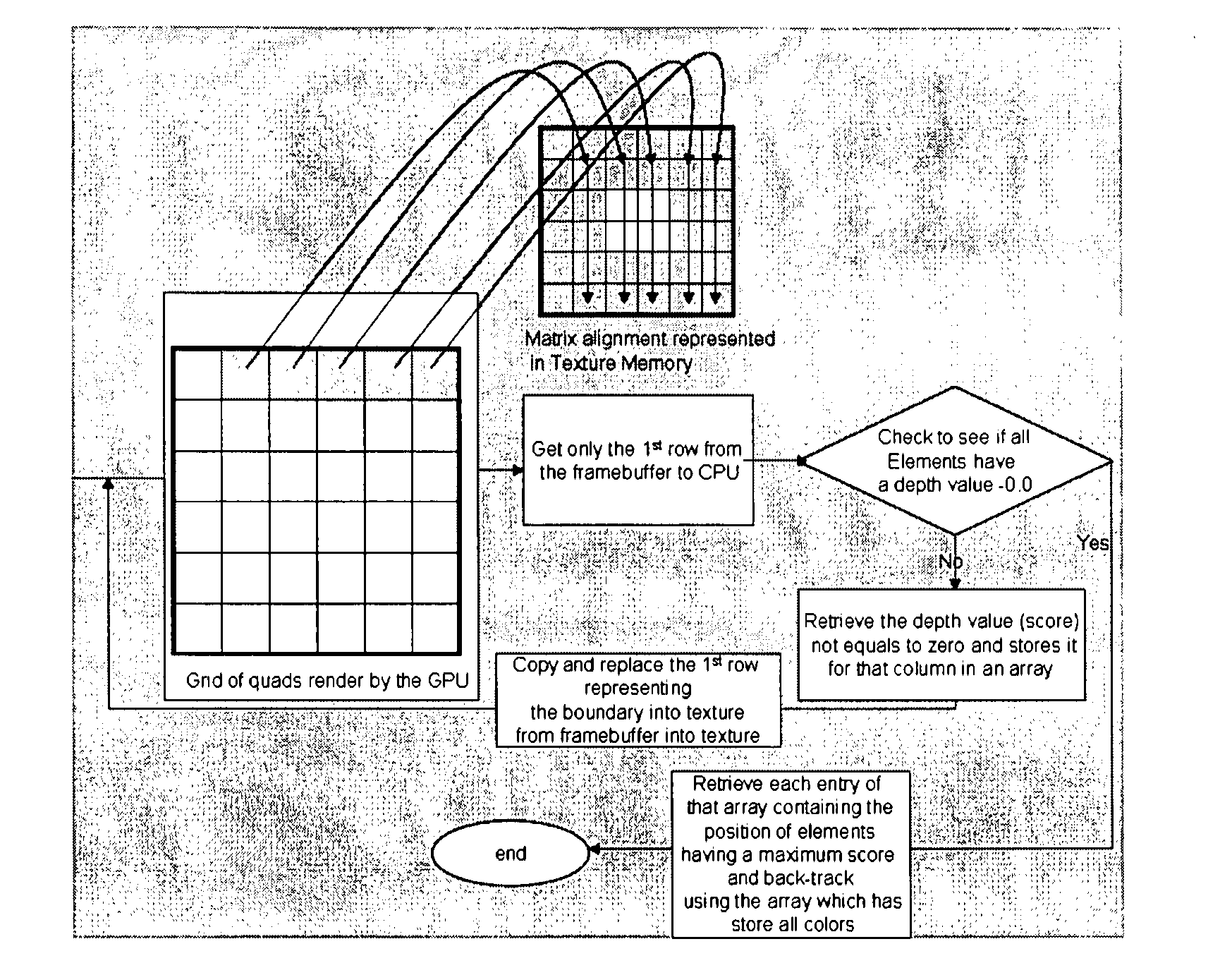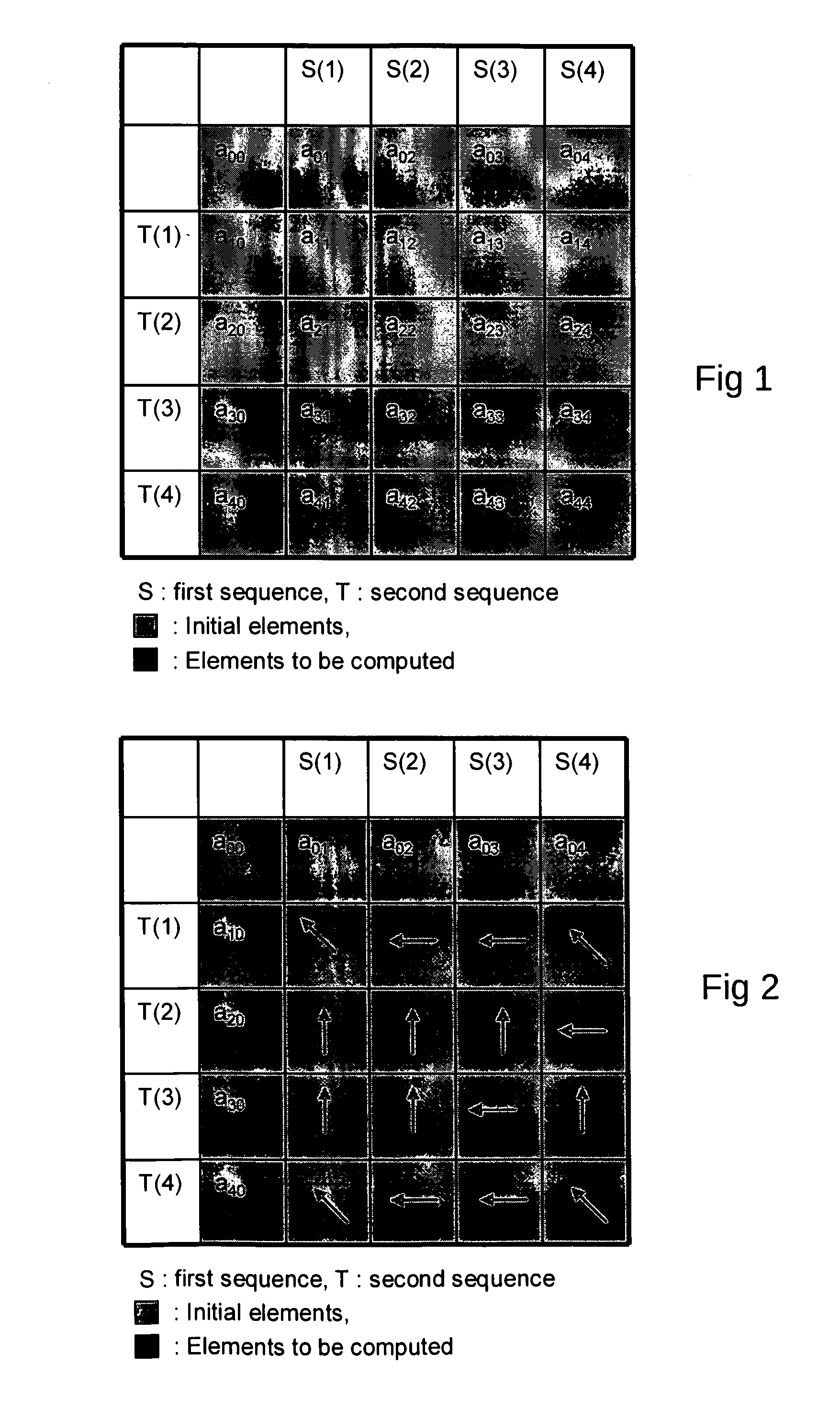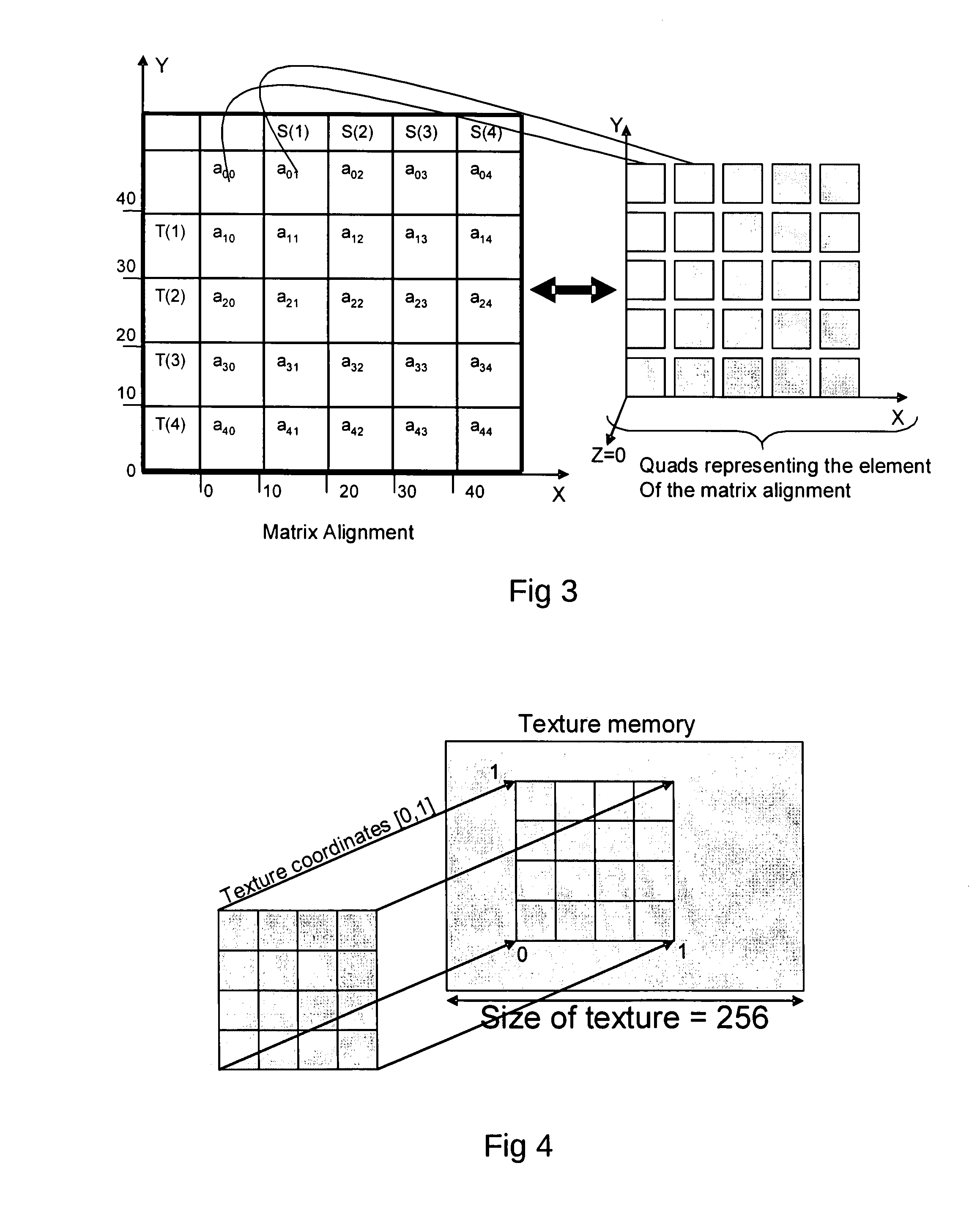[0006]Modern personal computers most typically include one or more central processing units that have a streaming single instruction, multiple data (
SIMD)
instruction set and associated registers. These include the SSE set on Intel processors, the AltiVec
instruction set on the
PowerPC processor, and the 3D-Now
instruction set on AMD processors. These instruction sets include single instructions that can perform integer or floating-point arithmetic on multiple operands so avoiding the need to perform looping or other iteration over the data. The principle intention behind providing such instructions is to facilitate and accelerate graphical, image and
video processing applications. However, their use is not limited to such applications. Since these
SIMD instructions are performed in hardware, they can perform arithmetic on sets of data considerably more rapidly than would be possible using conventional instructions, each operating on a
single item of data, in a loop.
[0007]These SIMD instruction sets can be used in
stream processing.
Stream processing is an efficient, high-performance technique for performing operations that require vector processing of a large set of data. Given a set of input and output data (these are the streams),
stream processing applies a series of computer-intensive operations (called “kernel functions”) to each element in the
stream. The
programming language “Brook” was developed to simplify implementation of
stream processing systems. Brook is an extension of standard ANSI C and is designed to incorporate the ideas of data
parallel computing and arithmetic. The streaming computational mode provides two main benefits over traditional conventional approaches to computation applied to large sets of data: it provides
data parallelism, which allows a
programmer to specify how to perform the same operations in parallel on different data; and arithmetic intensity, which allows a
programmer to specify operations on data which minimise global communication and maximise localised computation.
[0017]It is clear that there has been continued and increasing interest in the use of
hardware acceleration techniques and special-purpose hardware aimed specifically at accelerating genetic
sequence analysis (comparisons) since the late 1980s. Special-purpose systems have ranged from several chips on a PCI board to
server-sized machines, but all present solutions suffer from a number of disadvantages, including cost, ease of use and performance. Therefore, there appears to be a demand for a
system that scales and allows
hardware acceleration of searching algorithms, which is cheap, provides good performance in a flexible and easy-to-use manner, and which avoids the need to procure and operate special-purpose hardware solutions. Central to achieving this is the realisation that the operations required to perform sequence comparisons and scoring of two or more strings can be recast as a multi-pass rendering problem involving
texture mapping and image filtering operations that can be efficiently executed on modern GPUs.
Dynamic Programming[0032]Final alignment: this step performs a restricted alignment in the regions identified by the previous two steps. Note that the BLAST algorithm has undergone several refinements and the maximal scoring segment is used to define a band that uses the Smith-Waterman algorithm to find gapped alignment within the band. The recent gapped BLAST circumvents the problem of being restrained within an alignment region bounded by the window size while avoiding the high computational cost of unrestricted Smith-Waterman alignment by extending the alignment out from a central high-scoring sequences in a way analogous to how BLAST extends the initial maximal pair alignment. The initial pair of aligned amino acids is chosen as the middle pair of the highest-scoring, 11-residue window in the high-scoring segment pair alignment. The Smith-Waterman algorithm is then used to extend the alignment in both directions until the score falls below a fixed percentage of the highest score computed in the Smith-Waterman phase. The highest scoring Smith-Waterman alignment is found if firstly, the calculation is extended until a score of zero is obtained and secondly, the initial pair of amino acids selected as the midpoint from which to extends the actual alignment are part of the one that would be reported as the best by a complete Smith-Waterman alignment of the pair of sequences.SUMMARY OF THE INVENTION
[0033]An aim of this invention is to provide methods and systems whereby searches for sequence matches within a database can be performed more efficiently than is possible with conventional systems.
[0035]The method therefore assigns part of the task of performing the algorithm to the GPU, thereby reducing the amount of processing that must be performed by the CPU. Careful selection of the processing operations that are performed by the GPU can also lead to an increase in performance as compared with what would be possible if the entire algorithm were performed by the CPU.
 Login to View More
Login to View More  Login to View More
Login to View More 


